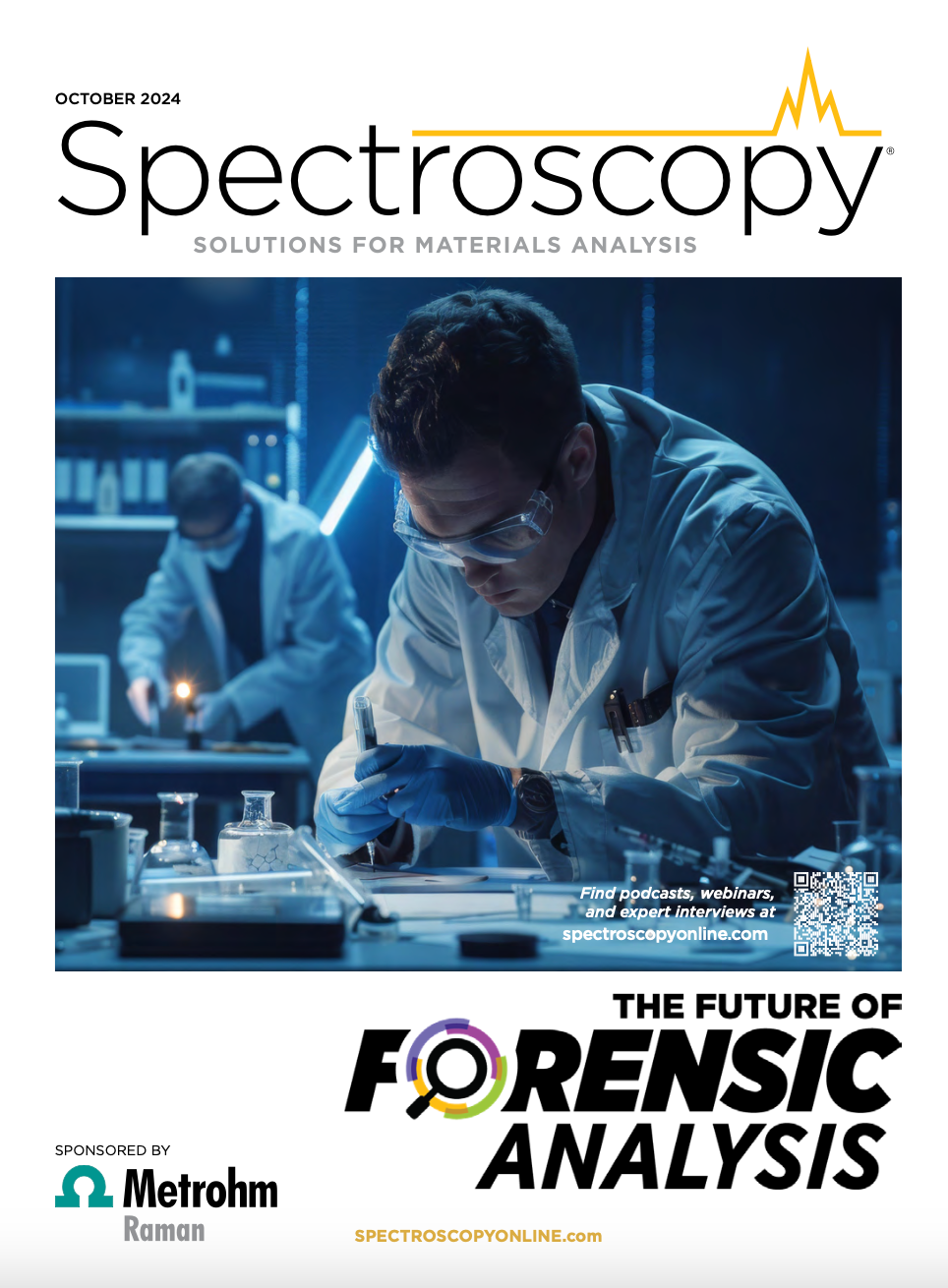Using NIR and UV-Vis Spectroscopy in Bloodstain Dating
A recent study explores the effectiveness of Near-infrared (NIR) and ultraviolet-visible (UV-vis) spectroscopy in determining the time since deposition (TSD) of bloodstains, a critical aspect of forensic investigations. By comparing these two methods, researchers aim to improve the accuracy and reliability of bloodstain dating, with potential implications for real-world forensic applications.
Using NIR and UV-Vis Spectroscopy in Bloodstain Dating ©Yeti Studio - stock.adobe.com

In the field of forensic science, accurately determining the time since bloodstains were deposited at a crime scene is vital for reconstructing events and establishing timelines. Traditional methods, which relied on visual changes in blood color, have evolved into sophisticated analytical techniques, including spectroscopy. However, while UV-vis spectroscopy has been widely studied, there has been less focus on near-infrared (NIR) spectroscopy, despite its potential to overcome certain limitations of UV-vis methods. A recent study published in Talanta by researchers from the University of Genova seeks to address this gap by critically comparing the effectiveness of NIR and UV-vis spectroscopy in forensic bloodstain dating (1,2).
Read More: NIR in Bloodstain Analysis
The Study
The research, led by Sara Gariglio, Cristina Malegori, Alicja Menżyk, Grzegorz Zadora, Marco Vincenti, Monica Casale, and Paolo Oliveri from the Department of Pharmacy (DIFAR) at the University of Genova, aims to evaluate the applicability of NIR spectroscopy for estimating the age of forensic bloodstains. The study involved collecting capillary blood samples from volunteers, which were then aged over 16 days and repeatedly analyzed using both NIR and UV-vis spectroscopic methods. The study utilized classical preprocessing techniques like Savitzky-Golay derivatives and standard normal variate (SNV) transform, along with targeted strategies such as class centering, which was shown to be beneficial through principal component analysis (PCA). Finally, partial least squares (PLS) regression models were applied to assess the accuracy of both NIR and UV-vis spectroscopy in estimating the time since bloodstain deposition (1).
Findings and Implications
The study’s findings revealed that both NIR and UV-vis spectroscopy demonstrated comparable performance in estimating the TSD of bloodstains, with root mean square errors of prediction (RMSEP) of approximately 40 hours for UV-vis and 55 hours for NIR spectroscopy. These results indicate an improvement in NIR spectroscopy compared to existing literature, suggesting that NIR could be a valuable tool in forensic bloodstain dating. Moreover, the study explored data fusion strategies, combining both spectroscopic methods to enhance the accuracy of TSD estimation. Mid-level data fusion showed promise, reducing the RMSEP to 35 hours under optimal conditions (1).
Despite the positive results, the study acknowledges the challenges of applying these methods in real-world forensic scenarios. NIR spectroscopy’s relative independence from preprocessing steps and its robustness make it more suitable for practical forensic applications, where environmental factors and other variables can complicate analysis. However, the research also highlights the potential of combining multiple spectroscopic techniques to achieve more accurate and reliable bloodstain dating (1).
Conclusions and Future Directions
The study concludes that NIR spectroscopy, when integrated with appropriate chemometric strategies, deserves increased recognition in the field of forensic bloodstain dating. While both NIR and UV-vis spectroscopy offer valuable insights into blood degradation processes, their combined use could lead to more accurate TSD estimation. However, further research is needed to refine these methods and develop standardized procedures that can be reliably applied in real forensic cases (1).
Exploring the synergies between different spectroscopic methods and advanced chemometric approaches, such as data fusion, holds promise for refining forensic practices and strengthening the reliability of age estimation in criminal investigations. The study sets the stage for future research aimed at bridging the gap between laboratory findings and real-world forensic challenges, ultimately enhancing the accuracy and effectiveness of forensic investigations.
This groundbreaking work by the University of Genova team not only advances the scientific understanding of bloodstain dating but also paves the way for more reliable forensic practices, contributing to the broader field of criminal justice (1,2).
References
(1) Gariglio, S.; Malegori, C.; Menżyk, A.; Zadora, G.; Vincenti, M.; Casale, M.; Oliveri, P. Determination of time since deposition of bloodstains through NIR and UV-Vis spectroscopy–a critical comparison. Talanta 2024, 278, 126444. DOI: 10.1016/j.talanta.2024.126444
(2) Liang, Y., Wu, J., Zeng, Q., Zhao, Y., Ma, K., Zhang, X., Yang, Q., Zhang, J. and Qi, Y. Rapid Identification of the Species of Bloodstain Based on Near Infrared Spectroscopy and Convolutional Neural Network-Support Vector Machine Algorithm. J. Braz. Chem. Soc. 2024, 35 (8), e-20240023. DOI: 10.21577/0103-5053.20240023

NIR Spectroscopy Explored as Sustainable Approach to Detecting Bovine Mastitis
April 23rd 2025A new study published in Applied Food Research demonstrates that near-infrared spectroscopy (NIRS) can effectively detect subclinical bovine mastitis in milk, offering a fast, non-invasive method to guide targeted antibiotic treatment and support sustainable dairy practices.
New AI Strategy for Mycotoxin Detection in Cereal Grains
April 21st 2025Researchers from Jiangsu University and Zhejiang University of Water Resources and Electric Power have developed a transfer learning approach that significantly enhances the accuracy and adaptability of NIR spectroscopy models for detecting mycotoxins in cereals.
Karl Norris: A Pioneer in Optical Measurements and Near-Infrared Spectroscopy, Part II
April 21st 2025In this two-part "Icons of Spectroscopy" column, executive editor Jerome Workman Jr. details how Karl H. Norris has impacted the analysis of food, agricultural products, and pharmaceuticals over six decades. His pioneering work in optical analysis methods including his development and refinement of near-infrared spectroscopy, has transformed analysis technology. In this Part II article of a two-part series, we summarize Norris’ foundational publications in NIR, his patents, achievements, and legacy.
New Study Reveals Insights into Phenol’s Behavior in Ice
April 16th 2025A new study published in Spectrochimica Acta Part A by Dominik Heger and colleagues at Masaryk University reveals that phenol's photophysical properties change significantly when frozen, potentially enabling its breakdown by sunlight in icy environments.